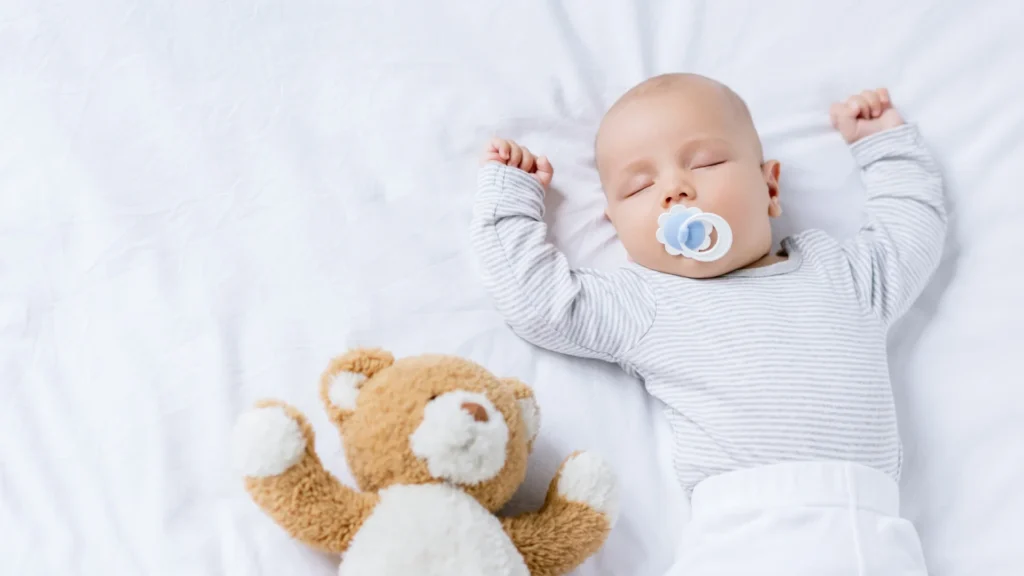As a parent, there’s nothing more heart-wrenching than watching your little one struggle with a stuffy nose at bedtime. The sniffles, the restlessness, and those tiny congested breaths can turn a peaceful night into a worrying ordeal. But don’t fret! Finding the Best Sleeping Position for Baby with Stuffy Nose can make a world of difference.
In this article, we’ll explore simple yet effective ways to help your baby breathe easier and sleep more comfortably when congestion strikes. From clever mattress tricks to safe positioning techniques, we’ve got you covered. Whether you’re a first-time parent or a seasoned pro, these tips will arm you with practical solutions for those stuffy-nose nights.
Ready to turn those sniffles into sweet dreams? Let’s dive into the world of cosy, congestion-free sleep for your little one!
Understanding Stuffy Noses in Babies
Stuffy noses in babies are common and can be caused by various factors. The most frequent culprits are:
- Colds: Viral infections that lead to nasal congestion
- Allergies: Reactions to dust, pollen, or other irritants
- Dry air: Which can irritate nasal passages
A stuffy nose can make breathing difficult for babies, especially during sleep. Babies are obligate nasal breathers, meaning they primarily breathe through their noses. When congested, they may struggle to feed and sleep comfortably.
Finding the Best Sleeping Position for Baby with Stuffy Nose is crucial because it can:
- Help drain mucus
- Make breathing easier
- Improve sleep quality
Understanding the cause and impact of your baby’s stuffy nose is the first step in finding effective solutions. By addressing this issue, you can help your little one get the restful sleep they need for healthy growth and development.
Sleeping Positions to Avoid
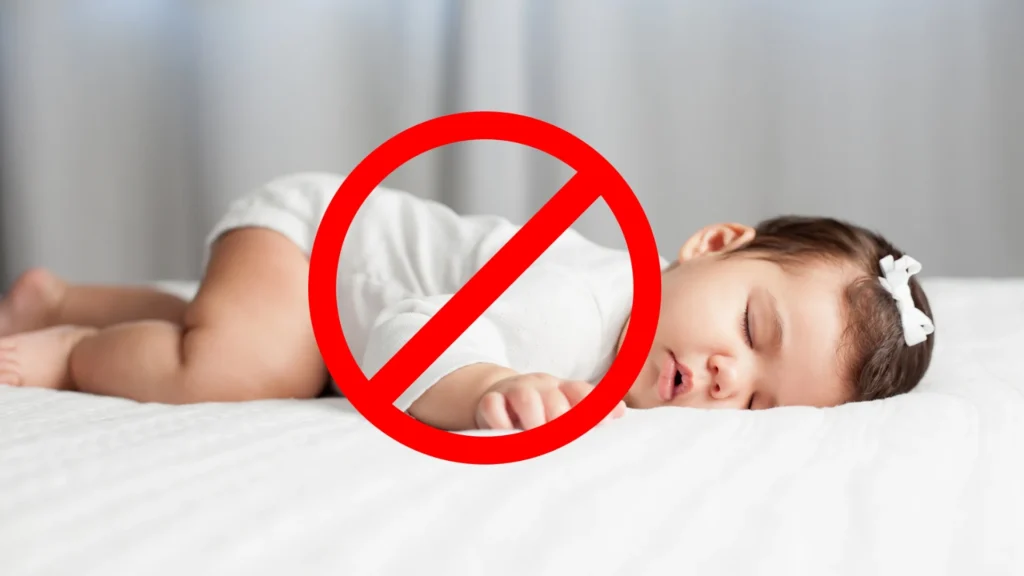
Before we talk about the Best Sleeping Position for Baby with Stuffy Nose, let’s first talk about which positions to avoid:
Stomach Sleeping: This position is not recommended for babies, especially those under 1 year old. It can increase the risk of Sudden Infant Death Syndrome (SIDS). For congested babies, stomach sleeping can also make it harder to breathe.
Flat on Back Without Elevation: Although back sleeping is generally safe, lying completely flat can cause mucus to pool in the back of the throat, making congestion worse.
Propping with Pillows: Never use pillows, cushions or sleep positioners in the crib. These items can pose suffocation risks.
Car Seats for Extended Sleep: While car seats are safe for travel, they’re not designed for prolonged sleep and can restrict airflow if the baby’s head slumps forward.
Remember, safety should always be the top priority when positioning your baby for sleep, even when dealing with a stuffy nose.
Best Sleeping Position for Baby with Stuffy Nose
Finding the Best Sleeping Position for Baby with Stuffy Nose can significantly improve your little one’s comfort and sleep quality. Here are some safe and effective positions to try:
Elevated Head Position
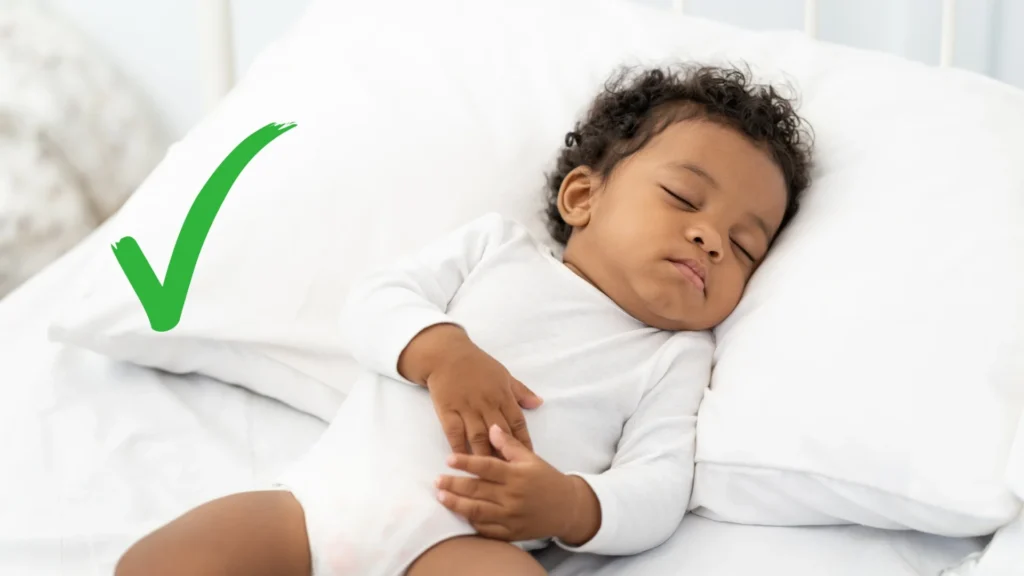
Slightly elevating your baby’s head can help drain mucus and ease breathing. To do this safely:
- Raise the head of the crib mattress by placing a rolled towel or thin book under the mattress.
- Ensure the elevation is slight, about 15-30 degrees.
- Never prop up the baby with pillows or blankets in the crib.
This position allows gravity to help clear nasal passages, making breathing easier for your congested baby. If you are looking for some baby pillows, here are some pillows that can help.
Side-Lying Position
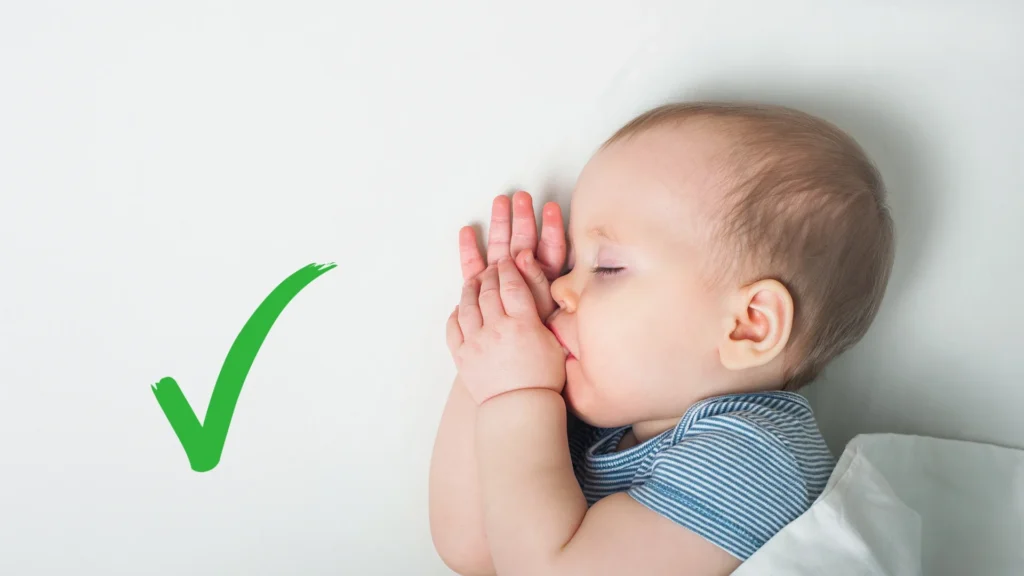
For supervised naps or when you’re nearby, the side-lying position can be helpful:
- Place your baby on their side, supporting their back with a rolled towel.
- Ensure the baby’s face is not pressed against the mattress.
- Always return the baby to their back for unsupervised sleep.
This position can help prevent mucus from pooling in the throat and may make breathing more comfortable.
Upright Holding (for naps)
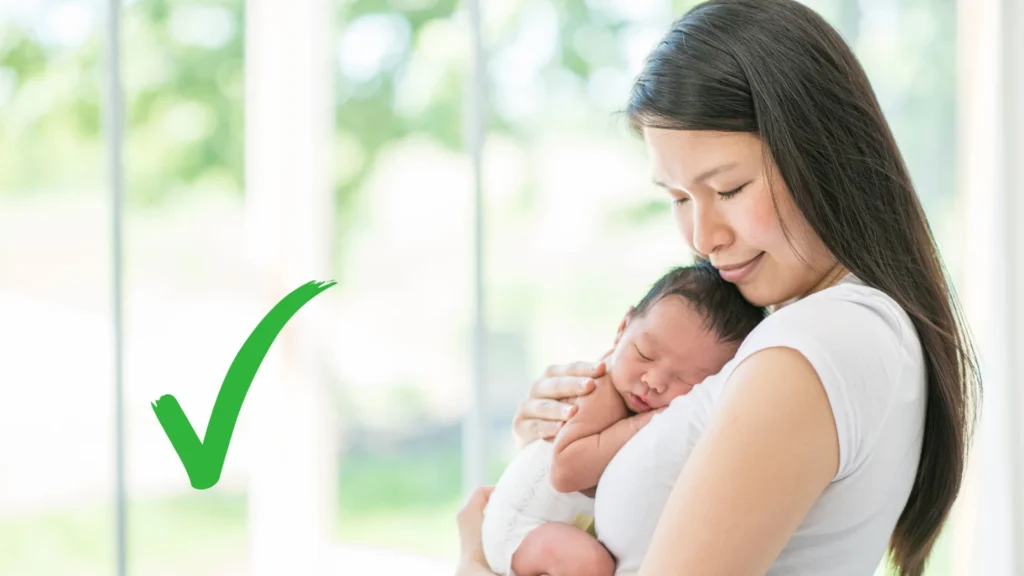
For daytime naps or when you’re awake, holding your baby upright can provide relief:
- Hold your baby against your chest in an upright position.
- Use a baby carrier or wrap for hands-free support.
- This position is especially helpful after feeding or for short naps.
Remember, while these positions can help with a stuffy nose, always prioritise safe sleep practices. For nighttime sleep, babies should be placed on their backs in a clear crib, even when congested. If you’re concerned about your baby’s breathing or congestion, consult your paediatrician for personalised advice.
Tips and Considerations for Babies with Stuffy Noses
While finding the Best Sleeping Position for Baby with Stuffy Nose is crucial, there are additional steps you can take to ease your little one’s discomfort:
Keep the Air Moist: Use a cool-mist humidifier in the baby’s room to add moisture to the air, helping to loosen congestion.
Nasal Saline Drops: Gently apply saline drops to your baby’s nose to help thin mucus. Follow with gentle suction using a nasal aspirator if needed.
Room Temperature: Maintain a comfortable room temperature, typically between 18-22°C (64-72°F). Avoid overheating, which can worsen congestion.
Monitor Breathing: Keep an eye on your baby’s breathing patterns. If you notice any signs of distress, seek medical attention promptly.
Gentle Massage: Softly massage your baby’s nose bridge and forehead to encourage mucus drainage.
Elevate the Crib: Slightly raise the head of the crib mattress to help drainage. Never use pillows or wedges inside the crib.
Hydration: For babies over 6 months, offer extra fluids to help thin mucus.
Consult a Paediatrician: If congestion persists or is accompanied by fever, difficulty feeding, or other concerning symptoms, contact your doctor.
Remember, while these tips can help, always prioritise safe sleep practices. If you’re unsure about any method, consult with your paediatrician for personalised advice.
Help Your Baby Breathe Easy Tonight!

Finding the Best Sleeping Position for Baby with Stuffy Nose can make a world of difference in your little one’s comfort and sleep quality. From slightly elevating the crib mattress to trying safe side-lying positions for supervised naps, these techniques can help ease your baby’s congestion.
Remember, while positioning is important, it’s just one part of the solution. Keeping the air moist, using saline drops and maintaining a comfortable room temperature all contribute to easier breathing for your baby.
Always prioritise safe sleep practices, even when dealing with a stuffy nose. If you’re ever in doubt or if your baby’s symptoms persist, don’t hesitate to consult your paediatrician.
Ready to tackle those stuffy nights? Try these safe sleeping positions and tips tonight. With a bit of patience and care, you can help your baby breathe easier and sleep more soundly. Sweet dreams await for both you and your little one!
Read these next:
What is Sleep Hypnosis? Does It Really Work?
10 Common Sleep Myths
7 Health Benefits of Sleeping Naked

